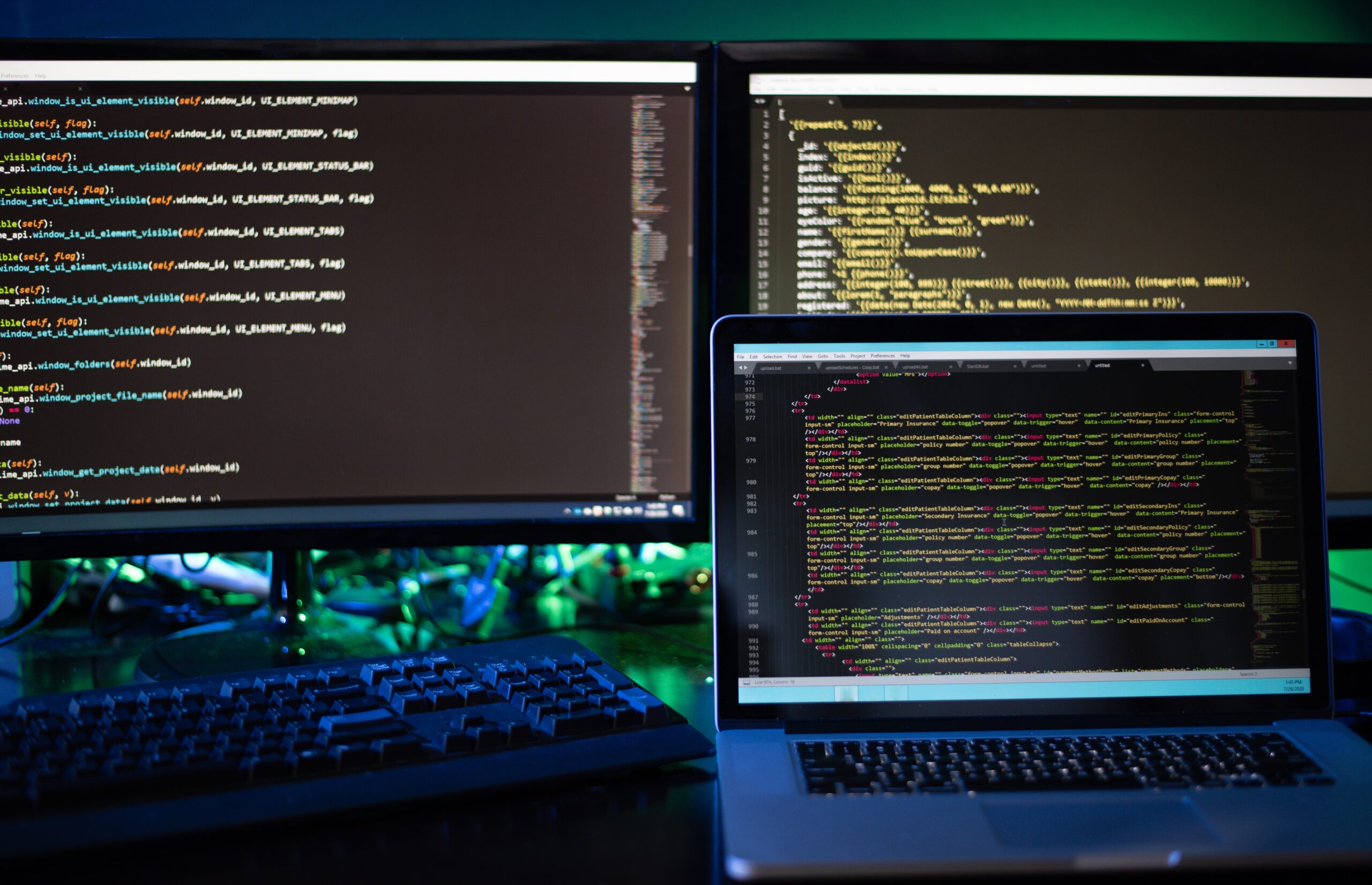Discover how regular maintenance ensures software reliability
Ensuring Software Longevity and Performance
Developing software is not a one-and-done process. Once deployed, software requires continuous attention to stay functional, secure, and relevant. Over time, user needs evolve, technologies change, and cyber threats grow more sophisticated. Ongoing software maintenance addresses these challenges, ensuring systems remain reliable, efficient, and aligned with business goals.
In this article, we explore the importance of software maintenance, its key benefits, and how it helps businesses achieve long-term success by maximising the value of their digital assets.
What is Software Maintenance?
Software maintenance refers to the process of regularly updating, monitoring, and optimising software to address issues, adapt to changing requirements, and improve overall performance. It goes beyond bug fixes, encompassing enhancements, security updates, and system optimisation.
Key types of software maintenance include:
- Corrective Maintenance: Fixing bugs and errors discovered post-deployment.
- Adaptive Maintenance: Updating software to remain compatible with changing environments, such as new operating systems.
- Perfective Maintenance: Enhancing functionality to meet evolving user needs.
- Preventive Maintenance: Proactively addressing potential issues to reduce future risks.
The Benefits of Regular Software Maintenance
1. Enhanced Reliability
Frequent updates and monitoring ensure software performs consistently, reducing downtimes and disruptions.
2. Improved Security
Regular security patches and updates protect against vulnerabilities, safeguarding sensitive data and maintaining compliance with regulations.
3. Cost Efficiency
Proactive maintenance reduces the likelihood of major system failures, avoiding costly overhauls or emergency repairs.
4. Better User Experience
Continuous improvements and updates enhance usability, ensuring the software remains intuitive and responsive to user needs.
5. Extended Software Lifespan
Maintenance prolongs the life of software by keeping it compatible with new technologies and standards.
6. Competitive Advantage
Businesses with well-maintained software can adapt quickly to market demands, staying ahead of competitors.
Common Challenges in Software Maintenance
1. Legacy System Dependencies
Maintaining older systems with outdated technologies can be complex and time-consuming.
Solution: Gradually migrate to modern frameworks while ensuring core functionalities remain intact.
2. Resource Constraints
Limited budgets or skilled personnel can make maintenance challenging.
Solution: Outsource maintenance to experienced providers who can deliver cost-effective and reliable support.
3. Managing User Expectations
Balancing routine updates with user expectations for uninterrupted service can be tricky.
Solution: Schedule updates during non-peak hours and communicate changes to users in advance.
4. Tracking Evolving Needs
User needs and business goals often change over time, requiring frequent adjustments to the software.
Solution: Regularly gather user feedback and conduct performance reviews to align updates with current requirements.
Key Components of Effective Software Maintenance
1. Monitoring and Diagnostics
Regularly monitor software performance, identifying and resolving issues before they escalate.
2. Bug Fixing and Patch Management
Address software bugs promptly and roll out patches to fix vulnerabilities and improve stability.
3. System Optimisation
Fine-tune system performance to handle increasing workloads and improve efficiency.
4. Compatibility Updates
Ensure software remains compatible with new operating systems, hardware, and third-party integrations.
5. User Support and Feedback
Provide ongoing support to users and incorporate their feedback into updates and enhancements.
6. Documentation Updates
Keep technical documentation current, reflecting changes made during maintenance for easy reference.
Steps to Implement a Successful Maintenance Strategy
1. Assess the Current System
Evaluate the software’s performance, identify existing issues, and determine areas for improvement.
2. Define Maintenance Goals
Establish clear objectives, such as enhancing security, improving performance, or adding new features.
3. Create a Maintenance Schedule
Plan routine maintenance activities, including updates, testing, and backups, to minimise disruptions.
4. Partner with Experts
Collaborate with skilled maintenance teams to ensure high-quality support and timely updates.
5. Conduct Regular Testing
Test the software thoroughly after every update to verify its functionality and stability.
6. Monitor and Review
Continuously monitor the software’s performance and update the maintenance strategy as needed.
Industries That Rely on Software Maintenance
1. Healthcare
Regular updates ensure compliance with regulations, secure patient data, and support telemedicine advancements.
2. Financial Services
Banks and fintech companies rely on maintenance to enhance transaction security and meet evolving compliance standards.
3. Retail and E-Commerce
E-commerce platforms require frequent updates to optimise user experiences, integrate new payment methods, and handle peak traffic efficiently.
4. Manufacturing
Maintenance ensures manufacturing software integrates seamlessly with IoT devices and supports supply chain management.
5. Education
Learning management systems (LMS) depend on maintenance to provide up-to-date content, support new learning methods, and ensure accessibility.
The Risks of Neglecting Software Maintenance
1. Security Vulnerabilities
Outdated software is more susceptible to cyberattacks, putting sensitive data at risk.
2. Decreased Productivity
Bugs, slow performance, and downtimes disrupt workflows, reducing overall efficiency.
3. High Repair Costs
Ignoring maintenance leads to major system failures that require costly emergency repairs or replacements.
4. Loss of Competitive Edge
Outdated software fails to meet modern demands, causing businesses to lag behind competitors.
5. Reduced User Satisfaction
Users frustrated by glitches, outdated interfaces, or poor performance may switch to competitors.
Technologies and Tools for Effective Software Maintenance
1. Automated Monitoring Tools
Tools like Nagios and SolarWinds continuously monitor software performance, alerting teams to potential issues.
2. Version Control Systems
Platforms like Git help track changes, ensuring easy rollback in case of errors.
3. Bug Tracking Software
Tools such as JIRA and Bugzilla streamline issue tracking and resolution.
4. Cloud-Based Backup Solutions
Cloud storage ensures secure and easily retrievable backups for disaster recovery.
5. DevOps Practices
Continuous integration and deployment pipelines simplify updates, reducing downtime and improving efficiency.
Future Trends in Software Maintenance
1. AI-Driven Maintenance
Artificial intelligence automates performance monitoring, identifies anomalies, and predicts potential failures before they occur.
2. Predictive Analytics
Using data analytics to forecast maintenance needs helps prevent issues proactively.
3. Blockchain Integration
Blockchain enhances data integrity and transparency in maintenance processes, especially for industries like finance and healthcare.
4. Cloud-Native Maintenance
Cloud-based solutions simplify updates, improve scalability, and reduce infrastructure costs.
5. Sustainability in Maintenance
Green IT practices aim to reduce the environmental impact of software maintenance through energy-efficient updates and infrastructure.
Maximising Value Through Maintenance
Software maintenance is not just a necessity—it’s a strategic investment in the longevity and performance of your digital assets. By ensuring reliability, enhancing security, and adapting to changing needs, regular maintenance allows businesses to focus on growth and innovation. Whether you’re managing enterprise software or consumer-facing applications, prioritising maintenance ensures your software remains a valuable asset in a competitive market.
FAQs
The main goal is to ensure software remains functional, secure, and aligned with evolving business needs.
The frequency depends on the complexity and criticality of the software, but routine checks are typically conducted monthly or quarterly.
While maintenance requires ongoing investment, it’s more cost-effective than addressing major failures or replacing outdated systems.
Yes, regular updates and patches address vulnerabilities, protecting software from cyber threats.
Maintenance focuses on updating and optimising the software, while support addresses user issues and provides technical assistance.












